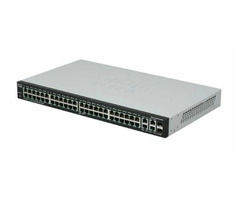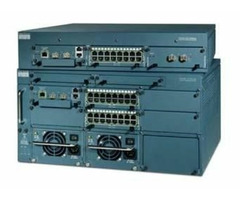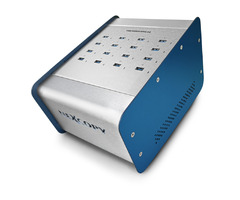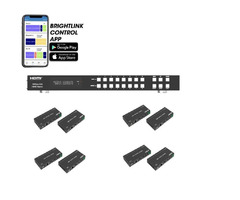From graphics and tower design to VR-readiness and upgradability, here's everything you need to know before buying a gaming desktop.
You've decided that you want to play Assassin's Creed Origins or Star Wars Battlefront II in glorious 4K, or you're ready to make the leap into virtual reality. But wait! What PC are you going to buy? What graphics card or CPU should you get? And what about the tower size and upgradability?
Before you invest a bunch of money in a new gaming system, take a gander at our guide for the ins and outs of buying a gaming desktop.
Quick Tips
Chomping at the bit to buy that new gaming desktop, so much so that you don't have time to go through the guide? Here's the TL;DR version.
- Get an AMD 500 series or Nvidia 10 series GPU if you can afford it. This will let you play the latest games at silky smooth frame rates.
- $1,000 is the sweet spot for gaming desktops. But starting at around $699, you can get a decent rig that will have entry- to mid-level specs.
- Buy a VR-ready system, if you can. This will future-proof your purchase should you decide to get an Oculus Rift or HTC Vive.
- Opt for an upgrade-friendly design when possible. Look for a system that you can open using few or no tools.
- Plan to replace some parts in the future. A new GPU or SSD is easy to install and much cheaper than buying a new PC.
- Don't buy a smaller form factor unless you're fine with purchasing another unit in two to three years. There's only so much you can upgrade in a smaller system, so try to get a PC on which the CPU, RAM and GPU can be replaced.
- Make sure you get USB Type-C and Thunderbolt ports. This will give you the bandwidth to connect two 4K monitors at once.
Design
Depending on your budget, you can get a desktop that's equal parts showpiece and gaming rig. Companies like Maingear and Origin PC will let you trick out your system with custom paint jobs, liquid cooling, see-through windows and colored cables just to name a few options. All of that finery comes at a pretty penny, however.
Outfitting the Origin PC Millennium with a custom paint job costs $250, with another $69 for the interior with liquid-cooling set at $353. That's $672 before you even start configuring the actual specs, because let's face it: Finery isn't cheap. Sometimes it's just cheaper to get a really cool-looking preconfigured chassis like the ($1,699) Alienware Area 51 or the Asus ROG G20CB ($1,649).
Does PC Size Really Matter?
Desktops come in several different sizes (full tower, mid tower, mini tower, small form factors and desktop) that take up varying levels of space. An average-size full tower like the Maingear Rush Super Stock is 24 inches in height and stands vertical on the floor, while a desktop like the Alienware Alpha can easily be stowed away in a nook or cranny.
So what size should you choose? Honestly, that depends on the size of the room your PC will be residing in as well as what kind of specs you want to cram in the case. A full tower gives you the freedom to take a kitchen-sink approach to your components: you know, an extended ATX motherboard, three GPUs and a cadre of storage in funky RAID configurations, with plenty of fans and maybe some liquid-cooling pipes and lighting.
The average height for a mid tower is 18 inches, which means you can still cram a whole lot of bells and whistles into the chassis, but in a more economical form. Averaging 12 inches, mini towers take up considerably less space, which means they also offer less space for upgrades.
Small form factor PCs come in a variety of shapes in sizes, and many of them can slide into your entertainment center just like a PS4 or Xbox One. And while desktop PCs don't offer much space for upgrading, you can still play your more powerful PC titles without sacrificing a good portion of the room to the PC gaming gods.
Another thing to keep in mind is that larger towers, especially those tricked out with a ton of goods, can definitely cost an arm, leg and a firstborn. All things considered, I'd recommend a mid or mini tower for most consumers, as you can get a good amount of solid specs at a reasonable price and have room to spare in your gaming den.
Performance
For buttery-smooth frame rates in both traditional and virtual gaming, I'd highly recommend investing in either AMD's Polaris (RX 550, 560, 570 or 580) or Nvidia Pascal GPUs (GTX 1060, 1070, 1080 or 1080 Ti). They're pricier, but you'll have the power you need for years to come. Plus, it's well worth the expense, considering that you want to maintain the 90 fps needed to stave off simulation sickness in VR.
However, if you're on an extra tight budget, you can opt for Nvidia's new GTX 1050 or 1050 Ti GPUs, both of which usually sell for under $150. The 1050 Ti can even be used with the Oculus Rift, though it doesn't meet the HTC Vive's official requirements. To get the best gaming laptop click on the link.

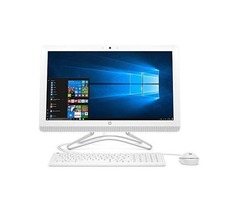
 Loading
Loading


